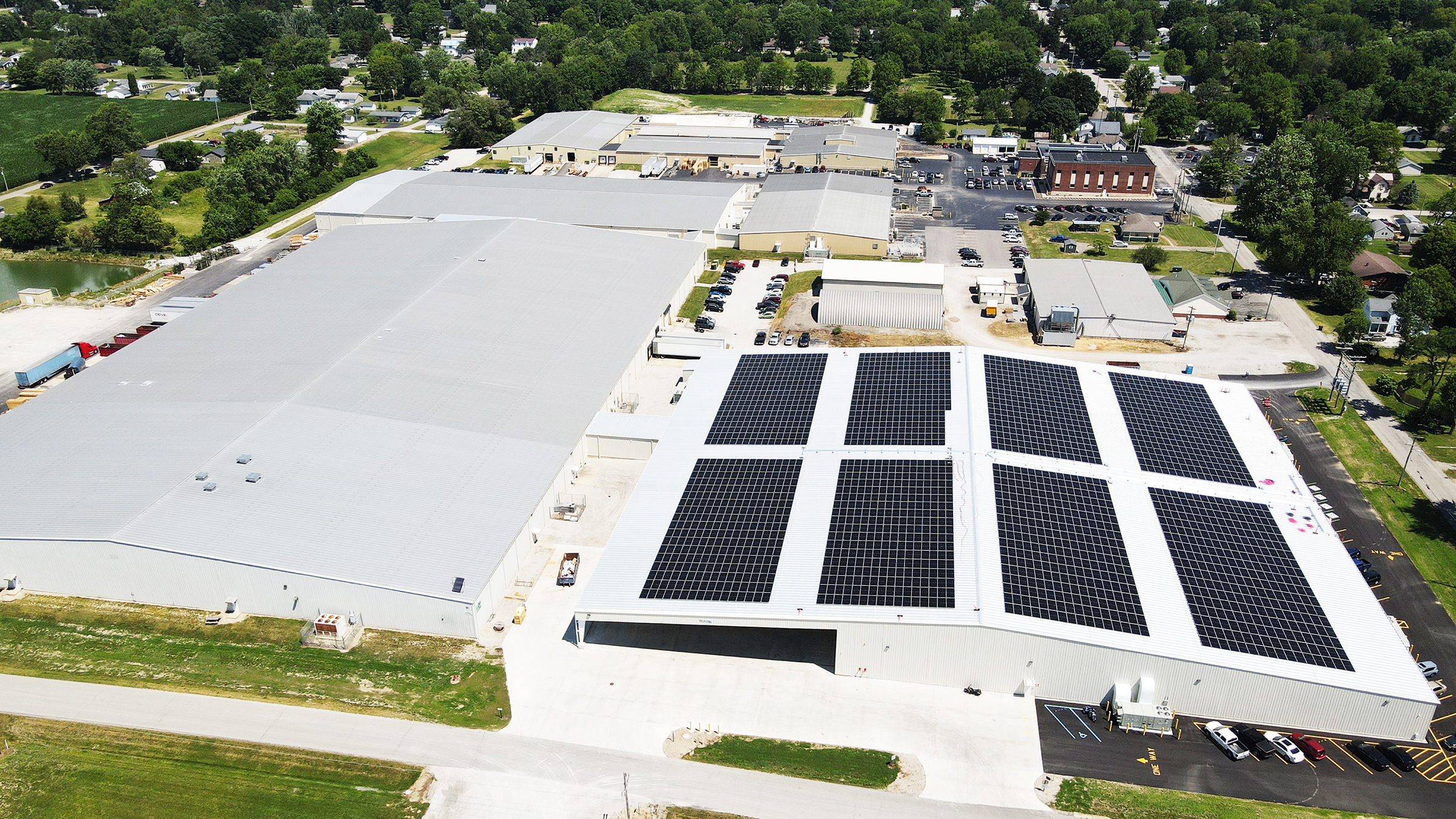New Solar Panels Reflect Draper Sustainability Efforts
Draper has installed more than 2,300 solar panels on its new building.

When Draper began planning for a 2023 expansion of its U.S.-based manufacturing facility in Spiceland, IN, the company knew it also meant a bigger carbon footprint and energy bill. So, as part of the addition, Draper planned to add solar panels to the roof of its new 100,000-square-foot building. Now, more than 2,300 solar panels are now fully online and are expected to reduce the company’s dependence on purchased outside electricity by 40%.
“The Draper commitment to efficiency and sustainability should come as no surprise. We’ve been in the business of making buildings more sustainable since 1902,” said Chris Broome, president. “This was a great opportunity to continue in that grand tradition, but with a modern twist.”
The company also used its years of experience with lean manufacturing principles to help turn other negative impacts into more positive outcomes. “One of the biggest impacts on the sustainability of any building is its efficiency,” explained Harold Seib, director of engineering. “Improving efficiency reduces a building’s carbon footprint and impacts the cost of heating and cooling and other energy needs.”
Draper instituted an energy monitoring and control system to shut down or reduce building systems in areas where they are not in use—including lights, air compressors, and HVAC, the three biggest energy users—during weekend and overnight hours. Seib said just shutting off the air compressor resulted in a 5-10% reduction over the weekends. Plus, the company is using motion-sensitive LED lighting throughout most of the factory, which shut down in unoccupied areas.
According to Chris Field, facilities manager, there's more to come. “One of the things we’re looking at right now is a building automation system," Field said. "This would take everything we’ve done on a building and campus-wide level and drill it down to the equipment level. That will be a very powerful tool for us to continue our sustainability and efficiency efforts.”
A daily selection of features, industry news, and analysis for AV/IT professionals. Sign up below.
The AVNetwork staff are storytellers focused on the professional audiovisual and technology industry. Their mission is to keep readers up-to-date on the latest AV/IT industry and product news, emerging trends, and inspiring installations.
